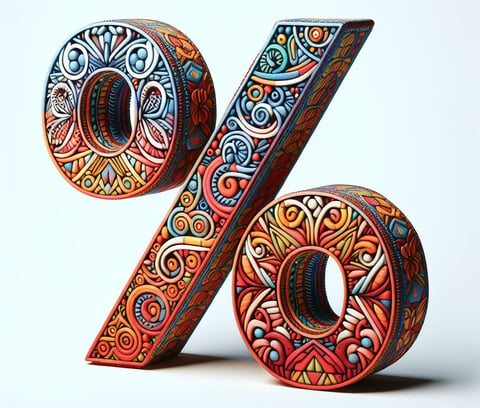"Unlock the secrets to smart investing and stay informed on the latest trends in Indian business and finance."
International Gemological Institute IPO
If you are seeking investment opportunities, these IPOs could be the best choice for you.
STOCK MARKET
CA Narendra Rajpoot
12/13/20247 min read
1. About the Company..
International Gemological Institute (IGI) is a provider of services related to the certification and accreditation of natural diamonds, laboratory grown diamonds, studded jewelry and coloured stones, both in India and in international markets. It also offers educational programs in this area.
IGI is a portfolio company of US based Blackstone Group, the world's largest alternate asset manager with asset under management(AUM) of $1,107.63 billion as of September 30,2024. IGI plans to spend Rs. 1,100 crore from IPO proceeds for the acquisition of IGI Belgium Group and IGI Netherlands Group from the promoters BCP Asia II top co Pte Ltd and the remaining funds for general corporate purposes. IGI's operations began in Belgium in 1975 when it established IGI Belgium. As of September 30,2024, IGI had a Global network of 31 branches that are equipped with IGI laboratories across 10 countries and 18 schools of gemology across 6 countries. As of the same date, IGI had over 7,500 customers located across 10 countries.
In CY2023, IGI India was the largest independent certification and accreditation services provider in India, with a market share of about 50%. Globally, it is the second largest independent certification and accreditation services provider based on revenue for CY 2023, with a global market share if about 33%. The company's ability to attract and retain talent has been key to its market position in the diamonds, studded jewelry and coloured stones industry in India. Its network of 20 laboratories and 9 schools is supported by 843 employees, including 316 gemologists and other professionals in research, education, and certification processes as of September 30, 2024. India is the worlds largest center for cutting and polishing diamonds. It accounted for about 95% of the worlds total polished diamonds in volume terms in CY2023.




2. Strengths
IGI is the worlds second largest independent certification and accreditation service provider for diamonds, studded jewelry and coloured stones in an industry marked by high entry barriers. It holds a 33% share of the global market based on the number of certifications for diamonds, studded jewelry and coloured stones for CY2023.
In the fast growing laboratory grown diamonds industry, it enjoys the first mover benefit and is the global market leader in providing certification services, with a market share of about 67%. IGI started issuing certification reports for laboratory grown diamonds globally in CY2005.
IGI is one among three players that offer a full stack of comprehensive offerings, covering grading and classification services across different stone types. Its service offerings comprise providing certification , co-branded reports, grading and accreditation services for natural diamonds, laboratory grown diamonds, studded jewelry and coloured stones. The company also provides value added services to its customers such as the screening and detection of laboratory grown and natural diamonds and sorting of diamond parcel for the detection of laboratory grown diamonds and/or diamond simulants, as well as ancillary services such as audit and assurance services for accounting firms and financial institutions.
The company is led by an experienced professional management team and is backed by the Blackstone group, the largest alternate asset manager in the world with asset under management(AUM) of $1,107.63 Billion as of September 30,2024. IGI is a portfolio company of Blackstone and benefits from the resources, relationships and expertise of Blackstone.
The company has seen a consistent increase in revenue from operations and profit after tax(PAT). Revenue from operations increased from Rs.364.69 crore in FY21 to Rs.490.99 crore in FY22 to Rs. 638.53 crore in FY23. PAT increased from Rs. 171.53 crore in FY21 to Rs. 241.76 crore in FY22 and to Rs. 324.74 crore in FY23.


3. Risks
The company proposes to use the net proceeds of the IPO for the proposed acquisitions of IGI Belgium and IGI Netherlands. It will then be responsible for overseeing and managing the overall IGI business inside and outside India. The company could face some challenges in managing and administering an internationally dispersed business.
There are certain outstanding legal proceeding involving the company, its directors, the IGI Belgium Group and the IGI Netherlands Group. Any adverse judgement in any of these cases could adversely affect the company's business and financial conditions.
The company is independent on certain key customers for significant portion of its revenue. For the nine months ending September 30,2024, and CY23, CY22 and CY21, the top 15 customers accounted for Rs. 306.85 crore(51.45%), Rs. 296.65 crore(46.46%), Rs.191.41 crore(38.98%) and Rs. 105.80 crore(29.01%) of its revenue. Any loss of or downsizing of business from these customers could hurt the company's business prospects.
Nearly all of the revenue for the company came from Gujrat and Maharashtra. Any disruption in the business environment of either or both states could adversely affect the company.
Grading the diamonds is a subjective matter. Though the industry standard of grading diamonds based on the 4C's is the largely prevalent and accepted metric of grading, there is subjectivity in the judgement, which can vary among institutions and gemologistes. The the company has implemented its in house developed software ''swiftcert'' across all its laboratories globally in 2024, enabling it to track the grading given by its laboratories, preventing significant deviations in grading can not be assured. This could adversely impact the company's business.


4. About the financials..
Net profit - The company's net profit has been increasing year on year. In December 2022, the net profit was Rs. 242 crore, which rose to Rs. 325 crore in December 2023. Based on this profit growth, the company is performing exceptionally well.
Market Capital - The company's market capitalization stands at Rs. 18,021, indicating a strong position to expand its market share.
Reserves - The company's reserves have been increasing year on year. In December 2022, the reserves were Rs. 339 crore, and by December 2023, they have risen to Rs. 509 crore.
Borrowings - The company's borrowings consist solely of lease liabilities. These liabilities amounted to Rs. 27 crore in December 2022 and increased to Rs. 31 crore in December 2023.
Other Liabilities - Other liabilities include trade payables, advances from customers, and other liabilities. In December 2022, trade payables amounted to Rs. 9.47 crore, advances from customers were Rs. 6.53 crore, and other liabilities totaled Rs. 47.55 crore.
Fixed Assets - The company's fixed assets have increased compared to CY2022. In December 2022, fixed assets were valued at Rs. 110 crore, and by December 2023, they rose to Rs. 117 crore.
Trade receivables - The company's trade receivables are very high, indicating that the collection department may not be operating efficiently. Trade receivables were Rs. 63 crore in December 2022 and increased to Rs. 108 crore in December 2023.
Cash Equivalents - The company's cash equivalents have increased, rising from Rs. 199 crore in December 2022 to Rs. 238 crore in December 2023.
Other Asset Items - The company's other asset items have increased, although the details are not disclosed on public platforms. In December 2022, other asset items were valued at Rs. 32 crore, and by December 2023, they rose to Rs. 117 crore.




5. Cash Flow..
Cash from operating activity - Cash from operating activities has increased significantly, indicating strong growth in operations. In December 2022, it was Rs. 194 crore, and by December 2023, it rose to Rs. 297 crore. Positive cash from operating activities reflects that the company is generating more cash from its core business than it is spending. This is a positive indicator of financial health, as it suggests the company’s day-to-day operations are profitable, enabling it to cover operating expenses, pay off debts, or reinvest in the business without relying on external financing.
Cash from investing activity - Cash from investing activities was negative, amounting to Rs. 66 crore in December 2023. A negative cash flow from investing activities indicates that the company is spending more on investments than it is receiving from them. This is typical and often signifies that the company is actively expanding or reinvesting in its operations.
Cash from Financing activity - Cash from financing activities was negative, amounting to Rs. 149 crore in December 2023. While negative cash flow from financing activities doesn't necessarily indicate a problem, it could reflect responsible financial management, such as reducing debt or returning value to shareholders. However, it is crucial to understand the reasons behind the negative cash flow, as it could also suggest missed opportunities for reinvestment or growth. To fully assess the situation, it's important to consider the company's overall financial health, operating cash flow, and long-term strategic objectives.


6. Ratio(%)
Debtor Days - The company’s debtor days increased from 47 days to 62 days between December 2022 and December 2023.
- An increase in debtor days suggests that the company is taking longer to collect payments from customers. While this could be due to strategic decisions, such as extending credit terms or expanding sales, it often raises concerns about cash flow and credit risk. It is crucial for the company to closely monitor debtor days and take necessary actions, such as improving collections or tightening credit policies, to ensure that this increase does not negatively impact its financial health.
Cash Conversion cycle - The company's cash conversion cycle increased from 47 days to 62 days between December 2022 and December 2023.
- An increase in the cash conversion cycle indicates that the company is taking longer to convert its investments into cash. While this may point to inefficiencies, it could also reflect growth or strategic business decisions. It is important for the company to analyze the underlying reasons for the increase and take measures to improve operational efficiency, such as enhancing inventory management, accelerating collections, or negotiating better supplier terms, to ensure that the longer cash conversion cycle does not negatively impact liquidity or profitability in the long run.
Working Capital days - The company’s working capital days increased from 32 days to 38 days between December 2022 and December 2023.
- An increase in working capital days suggests that the company is taking longer to convert its working capital into cash. This could indicate inefficiencies or reflect growth strategies, which can impact the company’s liquidity and cash flow. While a longer working capital cycle may be part of a strategy to drive growth, it’s crucial for the company to carefully monitor and manage its working capital to prevent liquidity issues and ensure efficient resource use. If necessary, steps should be taken to optimize inventory, accelerate collections, and negotiate better terms with suppliers.
ROCE % - The company’s ROCE stands at 99%, an exceptionally high figure that demonstrates it is generating impressive operating profit for every dollar of capital employed. While this is a positive sign, it is important to assess whether this performance is sustainable and based on solid business fundamentals or if it is driven by non-recurring events or high leverage. To fully evaluate the quality of a 99% ROCE, one should consider the company’s capital structure, industry position, profit sustainability, and growth prospects.




